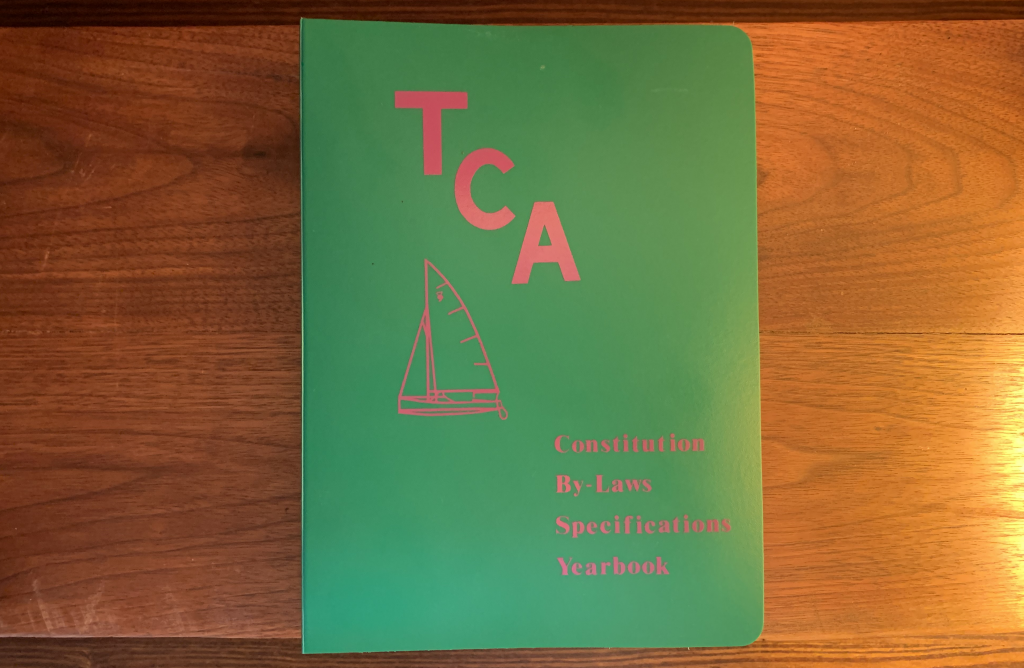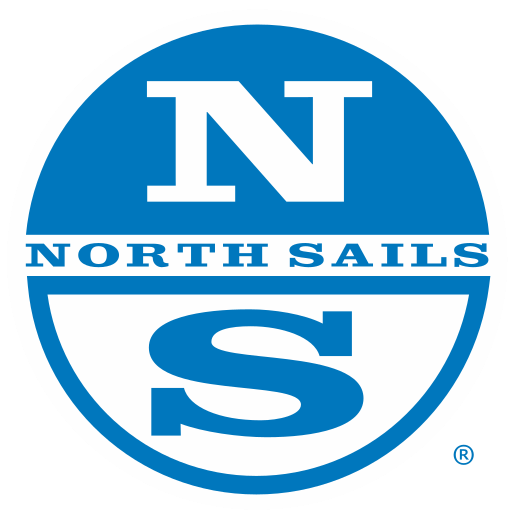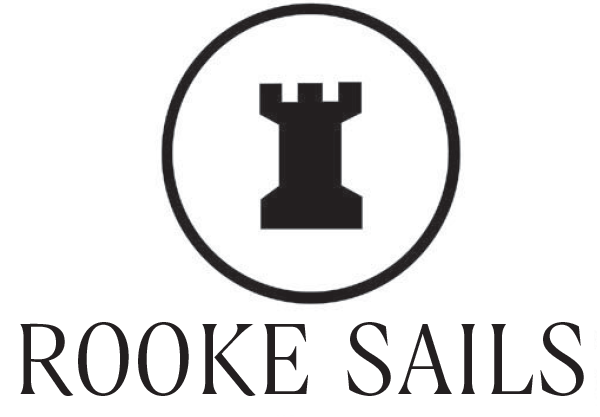Pro/con discussion of all amendments is happening on the TCA Google Group: https://groups.google.com/g/thistleclass
2023 Amendment Proposal 6:
Revise Sail Purchase Rules for Tracking and Enforcement
Submitted by TCA Governing Board (as voted upon during 03/03/2023 Governing Board meeting)
Proposal to change Specifications, Chief Measurer’s Rulings, and Parts and Materials Article XI: Sails Paragraph 3 Limitations Governing Purchase of Sails to define how purchase dates are defined and tracked while maintaining the existing purchase limitation of one set per year per boat.
Current Language:
Specifications, Chief Measurer’s Rulings, and Parts and Materials Article XI – Sails, Paragraph 3 states:
LIMITATIONS GOVERNING PURCHASE OF SAILS (Prior to 2022 revision, this was in the Bylaws):
-
- The acquisition of sails by the owner of a registered Thistle, for use on that Thistle, shall be limited to one suit per calendar year.
- The purchaser of a Thistle may acquire two suits of sails in the calendar year in which he acquires that Thistle. This applies to a new or used Thistle. Any sails retained by the new owner from the ownership of a previous Thistle, or acquired with the purchase of the boat, shall count as sails acquired, and shall subtract from the allowance for purchase of new sails, if such retained sails are to be put to competitive use.
- The use of a sail(s) in any race in a chevron event, a local regatta, or a fleet race, shall constitute acquisition, subject to the exemptions listed below.
- The date of acquisition is the date of shipping out of the loft. The sailmaker shall mark the sail with the date of shipment on the sail immediately below the royalty label.
- If a Thistler acquires a sail, or a suit of sails, which he does not feel competitive, he may retire such sail(s) within fifteen (15) days of the date of first use and may acquire a replacement sail. The Chief Measurer shall be notified of this action in writing prior to the acquisition of replacement sails. The intent is to allow new sails which are non-competitive to be retired from competitive sailing without prejudice and is not to allow the purchase of additional suits of competitive sails. The Thistler shall certify in writing in his notification to the Chief Measurer that he has retired the sail(s) only because they are non-competitive in his opinion. This exemption procedure may not be used again within five years of the date of notification of the Chief Measurer.
Proposed Language:
Specifications, Chief Measurer’s Rulings, and Parts and Materials Article XI – Sails, Paragraph 3 to read:
LIMITATIONS GOVERNING PURCHASE OF SAILS (Prior to 2022 revision, this was in the Bylaws):
- The acquisition of sails by the owner of a registered Thistle, for use on that Thistle, shall be limited to one suit (main, jib, spinnaker) per acquisition period. The acquisition period is defined as the time between the end of the official sail measurement period as published in the Notice of Race for the previous National Championships until the end of official sail measurement period as published in the Notice of Race for the next National Championship. In the event that an Annual National Championship is not held in a given year, the acquisition period resets on August 31 of that year.
- The purchaser of a Thistle may acquire two suits of sails in the acquisition period, as defined in Article XI, Paragraph 3 (a) above, in which they acquire that Thistle. This applies to a new or used Thistle. Any sails retained by the new owner from the ownership of a previous Thistle, or acquired with the purchase of the boat, shall count as sails acquired and shall subtract from the allowance for purchase of new or additional used sails, if such retained sails are to be used in any competitive event as defined in c) below.
- The use of a sail(s) in any race in a chevron event, a local regatta, or a fleet race, shall constitute acquisition, subject to the exemptions listed below.
- Sail acquisition rights apply to the boat, not the owner.
- Unused sail allocation shall not be carried forward to a subsequent acquisition period.
- The date of acquisition is the date of invoice from a sail loft or a signed bill of sale, if a private sale. The boat owner(s) are responsible for writing the year of the National Championship marking the end of the current acquisition period on the TCA royalty tag. If challenged, it is the boat owner’s responsibility to provide the invoice or bill of sale to establish the date of acquisition.
- If a registered class member charters a boat, they may use sails from their own boat, purchased as part of their allotment as described above in this article or use sails provided by the chartered boat.
- If a Thistler acquires a sail, or a suit of sails, which he does not feel competitive, he may retire such sail(s) within fifteen (15) days of the date of first use and may acquire a replacement sail. The Chief Measurer shall be notified of this action in writing prior to the acquisition of replacement sails. The intent is to allow new sails which are non-competitive to be retired from competitive sailing without prejudice and is not to allow the purchase of additional suits of competitive sails. The Thistler shall certify in writing in his notification to the Chief Measurer that he has retired the sail(s) only because they are non-competitive in his opinion. This exemption procedure may not be used again within five years of the date of notification of the Chief Measurer.
Advantages to TCA:
- The amended rule shifts from calendar year to a “Nationals to Nationals” timeframe which eliminates current questions and concerns when ordering sails in the Fall but taking delivery in the following calendar year.
- The amended rule provides a specific acquisition date for a sail purchase that can be documented.
- The amended rule eliminates the confusion surrounding how the class will date purchases when enforcing the rules governing purchase of new sails.
- The amended rule clearly puts the onus of responsibility on the boat owner to ensure sail purchases are properly dated on royalty stickers.
History and Reasoning:
This proposed change to the sail acquisition Specification, requiring a class vote, is similar to the proposed electronics amendment. This proposal will not change performance or what is allowed, but cleans up confusion in the existing specification and makes it more easily interpreted and enforced. This helps reinforce our strong, corinthian, one design ethos.
Over the last one and a half years the measurement committee has been attempting to better track sail acquisition. As is widely known, we are limited to one new set of sails per year per boat except in the first year of acquiring a new boat when two sets of sails may be acquired. We are not attempting to alter the number of sails that may be acquired. However, we do believe the current Specification, Article XI Paragraph 3 (c)(d) which outlines the process of tracking the number of sails purchased in a given year is difficult to enforce.
First, the provisions regarding what constitutes acquisition and the date of acquisition are confusing. The first part, Article XI Paragraph 3 (c) states that the date of acquisition is the first date the sail is used. The next part, Paragraph 3 (d) states the date of acquisition is the date the sail is shipped. Some have conflated these and misunderstood the date of acquisition to be the date of first use. This also doesn’t account for private purchase of used sails.
The second issue is how we can check or confirm the shipping date and/or first use. Paragraph 3 (d) also states that the date of shipment should be placed on the royalty tag by the sailmaker. In checking every sail at the 2022 Nationals and 2023 Midwinters, over 90% of the sails checked do not have any date. Even a spot check of older sails, only one had a date.
The measurement committee then asked the sailmakers to start putting the delivery date on the sails again. All three big sailmakers (Quantum, North, Evo) have stated that they do not believe they can reliably date royalty stickers with sail shipment date, since they may manufacture sales in bulk, in far away lands, and distribute over several months, and certainly across year boundaries. This is largely driven by production constraints and the fall discount period where sails are ordered in the fall and delivered the next year.
The problem then is clear, we do not currently have a reliable way to determine the date of acquisition.
We considered order date, invoice date, delivery date, date of first use and all the ways we could make each of those work. We decided the date of the last invoice from a sail maker, or a bill of sale from a private seller, would be the easiest and most reliable way to solve the issue without establishing a labor intensive serial number and tracking process. We felt the class does not need that level of tracking but does need a process that can reliably establish acquisition date if questioned. Under this system the sail owner will be responsible to produce an invoice or bill of sale to confirm the date of registration is appropriate.
This amendment also clarifies a third issue, that the sail allotment belongs to the boat, not the owner.
PRO Comments:
CON Comments:
- This rule will require that boat owners retain records of sail purchases from sail makers and private parties
- This rule will require private sales to be documented with a bill of sale.





